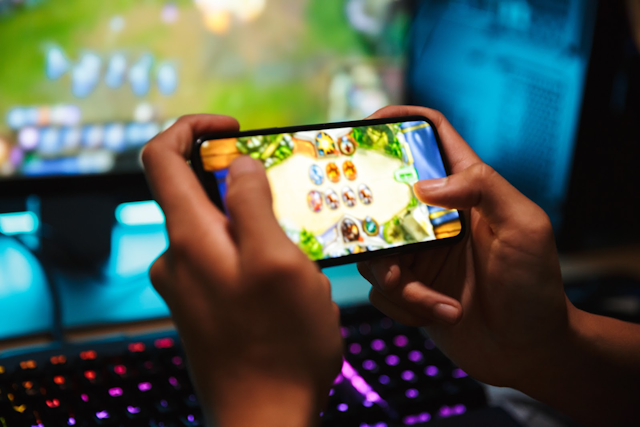Six global trends advertisers need to incorporate into their 2021 strategies
The novel coronavirus has brought novel challenges, and 2021 is the perfect opportunity to rise to the occasion. The pandemic forced companies to digitize further and rely more heavily on digital advertising, but this fundamental shift in how businesses connect with consumers isn't temporary like the virus. It's here to stay, and it's time to embrace it more fully.

Anzu assess the trends and challenges that emerged this year as a result of the coronavirus.
I'm a great believer in business interconnectedness and an integrated approach that presupposes a 360-degree view on marketing, advertising, and business in general. For companies to stay relevant, especially in a post-pandemic environment that has altered the way consumers behave, it's critical to know about upcoming global trends and find ways to incorporate them into your marketing or advertising strategy ahead of time. This approach can provide an edge over the competition, differentiating your business by giving your audience the things they are just starting to realize they want.
Here’s a look at some of the trends that will impact marketers in 2021.
The gaming boom
Gaming has been on the rise over the past few years, with a significant boost in gamers' numbers and, consequently, investments into the esports industry which brought in $186.3 million in September 2020 alone. However, COVID and stay-at-home orders pushed those numbers higher than anyone had predicted. Currently, there are 3.4 billion digital gamers and that number is expected to continue to grow at a rapid pace. For comparison, the top two social networks, Facebook and YouTube, have 2.7 billion and 2 billion daily active users, respectively.
What does this mean for advertisers?
Gaming is an advertising channel that is no longer a 'nice to have' and should now be considered an integral part of a multi-touch strategy. Spurred by an increase in players, rapid technological advances, and the growing relationships between advertisers and game developers, the in-game advertising market is expected to grow by USD 1097 billion, with a CAGR of nearly 20% over the next few years.
Advertisers should incorporate in-game advertising into their media buying strategy to capitalize on the reach that gaming offers. It is an especially effective channel for communication with millennials and Gen Z, both of which have come of age and have great spending power. The channel has evolved into one that offers many of the same campaign measurements that other platforms already have and is ready for its prime-time debut into the media ecosystem.
In-game ads offer brands a unique way to connect with an audience with tremendous spending power and influence. What sets this ad channel apart from others is the level of engagement it demands from users. When gamers play, they are fully invested and fully focused, not distracted by a second screen, which is often the case as users scroll through social feeds while watching T.V. This high engagement level gives advertisers a chance to be front and center, increasing brand awareness and affinity due to higher attention spans.

Mobile continues to dominate
Globally, 96% of internet users own a smartphone, and the pandemic has certainly fueled our dependence on devices. AppAnnie found that users now spend an average of 4 hours and 20 minutes on mobile, nearly 25% of their waking hours. This mobile-first behavior will only become more ingrained for consumers, meaning advertisers need to have a robust mobile strategy to connect with customers where they are. Projections put mobile ad spend at $290 billion worldwide, representing a two year CAGR of 21%.
What does this mean for advertisers?
Mobile gaming will also continue to experience significant growth, with consumers spending over $120 billion on mobile games. One of the most innovative marketing campaigns of 2020 featured Congresswoman Alexandria Ocasio-Cortex live streaming as she played Among US! on Twitch. The campaign was developed to encourage young people to vote in the U.S. presidential election. It is now among the most-watched Twitch streams in history and shows how marketers can connect with both the gaming community at large and Gen Z in particular.
Beyond mobile games, our device dependency will only continue to grow as consumers adopt and adapt to the shop-from-home reality that the pandemic has solidified. ResearchGate found that M-shoppers (those that use mobile devices for shopping) tend to purchase habitual products on mobile much more often than first-time products and those that need more consideration. If you offer the type of products that users buy regularly, mobile is a great sales channel for purchase but, even if you have a longer sales cycle, mobile should still be used as a major touchpoint.
The fusion of business ecosystems
No man is an island, and now no business should operate in a single ecosystem. According to Deloitte, companies should look beyond their industry to address customer needs more holistically. This can come to fruition by identifying new partnerships that can 'create new experiences within relevant ecosystems or continue providing existing experiences but at greater convenience.' Deloitte offered this example: a supermarket chain that collects data about what customers buy could partner with a health company that could offer discounts to its customers who routinely purchase healthier items.
What does this mean for advertisers?
In the greater scope, this means marketers should look to share data with companies to create a symbiotic relationship that benefits customers. Co-marketing or partnership engagements aren't new concepts for advertisers but thinking outside of the industry is. It's all about finding a better way to solve customer needs by providing them with more from the same place.
Privacy and data transparency
Reliable data is the foundation of digital marketing. Due to the introduction of GDPR, COPPA, and California's CCPA, the average consumer is now more aware of how their privacy is being exploited and more cautious when it comes to how personal data is being collected and leveraged by advertisers. This means that advertisers need to respect users and their rights not to have their data sold or used in nefarious ways while still providing personalized and relevant ads.
What does this mean for advertisers?
Soon we will enter a post-cookie era. AdTech companies and industry leaders will have a heavy hand in developing new technologies that can, at the same time, help advertisers and protect consumers – a daunting task, to say the least. The IAB Tech Lab is pushing for a universal I.D. that would offer 'durable privacy controls' to build consumer trust, which it believes is the foundation for a 'healthy and viable ad ecosystem.' Whether it's this format or something else that emerges, brands must start planning for this future as it will quickly be upon us.

Agility
A key takeaway from 2020 is that businesses need to expect (and be prepared for) the unexpected. Over the past few years, a significant focus and priority for advertisers has been to become more efficient, but from now on, we'll see an emphasis on agility, flexibility, and adaptability. As trends develop, driven by changing consumer behaviors and demands, advertisers will need to meet the moment head-on. This can be scary for brands, especially those that are more conservative when testing new media platforms, adopting new technologies, and creating new experiences.
What does this mean for advertisers?
It's essential for advertisers and C-level executives to support the evolution of brand communications, knowing there will be bumps in the road. But, as we live in the golden age of data, advertisers can analyze and access performance faster than ever, adjusting media strategies in real-time based on real-world metrics.
In WARC's Global Advertising Trends: State of The Industry 2020/2021, some growth predictions, like those related to print media and linear TV and radio are grim, with the report estimating it will take the entire global ad market at least two years to recover fully. But other channels offer a light at the end of the pandemic-induced tunnel. For 2021, social media spend is projected to rise by 12.2%, online video spend will increase by 12.8%, and paid search will grow 7%.
Authenticity
The US had a dramatic year, fueled by a call for social change and equality. This filtered out worldwide and penetrated the thought processes of every business. It's never been more critical for companies to approach advertising campaigns through a lens of authenticity. Consumers are quick to pounce on any company that has even a whiff of inauthenticity, instead wanting to engage with brands that 'put their money where their mouth is.' Brands, rightfully so, are responding to that. In February, mega advertisers pulled campaigns from Facebook over the company's approach, or lack thereof, to handling misinformation and hate speech.
What does this mean for advertisers?
In the coming year, brands will need to work hard to ensure that their messages are authentic and personalized. That's what consumers now expect. By relying more heavily on data and technologies like AI and predictive analytics, brands can deliver a more authentic experience.
A second avenue to consider is more partnerships with influencers, but brands need to be careful about which ones they work with. As celebrities continued to flaunt their envious lifestyles online as if life were normal, there was an onslaught of outrage from fans who were stuck at home and suffering. A survey found that 70% of millennials make purchases based on peers' recommendations and that 30% of all consumers are more likely to buy products from non-celebrity influencers as they are seen as more relatable.
Micro-influencers, on the other hand, can provide brands with the authenticity they need. In fact, some of the most authentic influencers come from the video gaming industry. These pro-gamers stream their gameplay sessions for thousands of fans who tune in, of course, to pick up tips, but also because they see the gamer as a real person who shares their passion.
A final thought
Everyone is excited to see this year come to an end; there's no question about that. What remains to be seen is how we, as humans and as companies, will take the lessons learned and become better versions of what we were. It will take time, and there will be some trial and error involved, but if we look at the pandemic as a catalyst for change, some good can come out of what was an unusual, earth-shaking year.
Natalia Vasilyeva, VP marketing at Anzu.io.
Content by The Drum Network member:

Anzu
Anzu is the most advanced intrinsic in-game ad solution for mobile, PC, console, and the metaverse. Anzu’s in-game ads put players first and help advertisers reach...
Find out more
